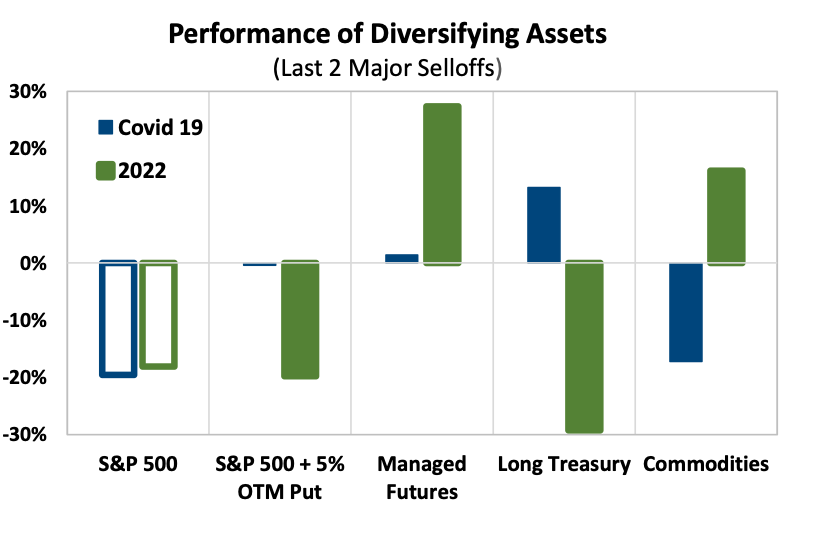
With the “Big Game” coming in a couple of weeks and more states legalizing sports betting, sports books are heavily advertising parlays. These are bets where two or more wagers are combined into one. To win, the bettor needs to be correct more than once. While giving gambling advice is outside our purview, the odds for parlays are generally terrible for the bettor, which is probably why the sportsbooks advertise them so much.
Hedging a portfolio against bear markets is a parlay of sorts in that the investor needs to make a minimum of two correct and difficult forecasts to be successful. First, the hedger needs to correctly anticipate that the market is going to move lower. Second, the hedger needs to have some insight into the speed and cause of the downturn. The last two major downturns, Covid and 2022, were vastly different and the portfolio hedges that worked during Covid did not work in 2022 and vice versa.
The 2020 Covid downturn was sharp and short. On a single day (3/16/20), stocks dropped over 12 percent; the 10-year Treasury hit an all-time low yield of 0.32% on March 8th. In this ferocious selloff, puts and Treasury bonds were effective hedges, but commodities and managed futures did not work.
Fast forward to last year, and the selloff was slow and methodical. Surprisingly, in 2022, a portfolio combining both puts and stocks underperformed a long portfolio of only stocks, because options prices were very expensive and the decline in stock prices was not sharp or fast. However, persistent negative trends led to strong returns from managed futures (trend following) strategies. Inflation and interest rates increased, which led to good commodities returns, but owning long Treasuries increased portfolio losses.
There is an active debate, with smart people on each side, about the utility of portfolio hedges. Post Covid in 2020, the argument for portfolio hedging seemed stronger than it does today. Last year showed a weakness in the pro-hedging argument – the portfolio hedger must hit a parlay (right on both the timing and type of hedge) to be successful. For most investors, drawdowns are best managed with cash management and a longer-term time horizon, because it is difficult to be right twice.